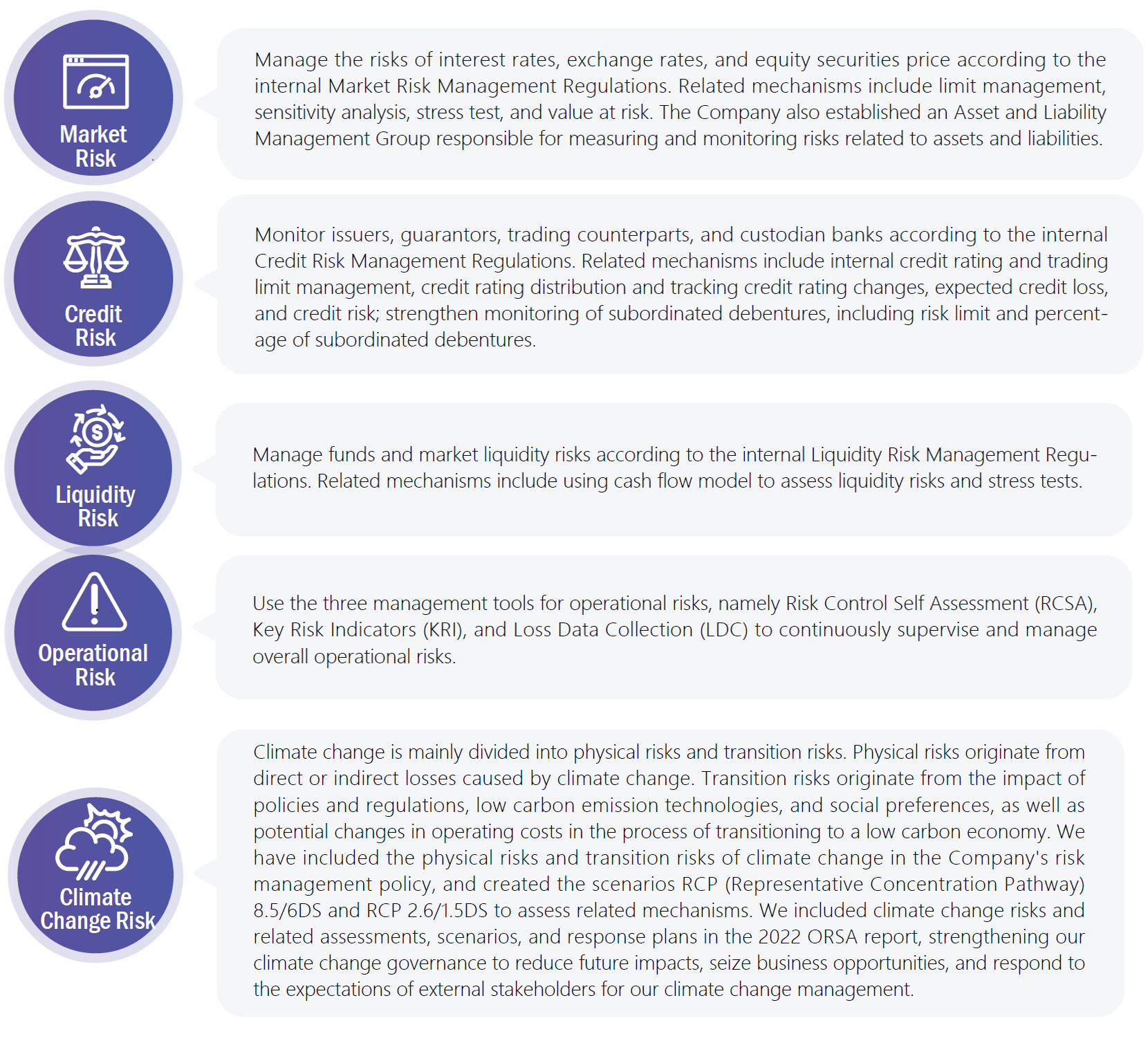Risk Management Policy
Risk management is a major topic of the insurance industry. China Life has set strict risk management as a business goal of concern in the future, and established and periodically reviewed the risk management policy, which is the highest guiding principle of internal risk management mechanisms. The policy clearly defines overall risk management goals and strategies, organization and duties, capital adequacy assessment, risk appetite and limit, and identifies material risk categories and management processes. Besides matching the trend of Enterprise Risk Management (ERM), it is also the basis for establishing regulations, mechanisms, and implementation practices.
Identification and response to material risks

Business Continuity Management
To ensure personnel safety and protect customer rights and interests, business reputation, and assets, China Life has made a commitment to minimize damage and prevent the suspension of operations when a risk event takes place, and thus implemented business continuity management mechanisms in 2021. China Life also announced a business continuity management policy and statement that all employees are required to comply with. Furthermore, the Company established related management procedures and response plans to systematically handle the risk of catastrophic disasters. We also provide related training and organize disaster evacuation drills, and strengthen and improve current management measures to reduce the impact of catastrophic disasters on the Company.
Furthermore, we integrated the resources required for the business continuity management system, evaluated the resources required for the core business of departments, provided business continuity related training through 8 digital courses, organized 13 simulation drills, and successfully obtained ISO 22301:2019 Management System certification in 2022 to ensure that key operations, such as policyholder services, claims, and new contracts, are not suspended, thus fulfilling our commitment to sustainable development.
Furthermore, we strengthened offsite and remote work mechanisms and capacity in response to the impact of the pandemic, continued to strengthen business continuity mechanisms, and expanded equipment of the disaster readiness center. Based on the core businesses identified in the BIA in 2022, we included an additional 46 key systems and 35 dependent systems; 81 systems in total. To verify the effectiveness of backup mechanisms, we completed disaster recovery drills that included the abovementioned systems in 2022.












